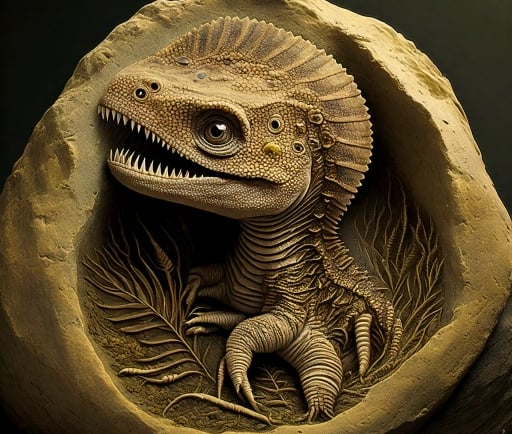Baby Yingliang: A Rare Dinosaur Discovery


An Overview of the Baby Yingliang
The Baby Yingliang is a remarkable fossil representing a dinosaur embryo preserved inside a fossilized egg, offering a rare glimpse into the life of oviraptorosaurs. This particular specimen dates back approximately 66 to 72 million years, placing it in the late Cretaceous period. With a size of 27 centimeters, the Baby Yingliang stands as one of the most significant discoveries in paleontology, shedding light on the reproductive behaviors and development of this fascinating group of dinosaurs.
The Significance of the Discovery
Discovered in the rich geological layers of Ganzhou, Jiangxi Province in China, the Baby Yingliang is not just a remarkable find due to its excellent preservation but also because it provides essential insights into the evolutionary biology of oviraptorosaurs. This group is characterized by their unique morphology and behaviors, and the condition of this embryo allows scientists to make inferences about its growth and developmental stages. The Baby Yingliang can further our understanding of the fossilized nesting habits of these creatures, as it embodies the link between reproductive strategies and environmental adaptations.
Implications for Paleontology
The Baby Yingliang has significant implications for our understanding of dinosaur embryology and the life cycle of these prehistoric animals. Its preservation allows researchers to analyze the skeletal structures and potentially interpret the growth patterns of the embryo, indicating how these young dinosaurs might have developed before hatching. Such discoveries are crucial as they help fill gaps in our knowledge regarding extinction events and the diversity of life forms during the late Cretaceous period.
Moreover, studies surrounding the Baby Yingliang have the potential to revolutionize theories related to dinosaur behaviors, particularly those concerning nesting and parental care, as this fossil provides a tangible connection to the life of these ancient reptiles. The insights gained may reshape our understanding of how these magnificent creatures interacted with their environment and cared for their young.
In conclusion, the Baby Yingliang serves as a significant touchstone for researchers in the field of paleontology, highlighting the importance of fossil records in unraveling the mysteries of prehistoric life. As studies continue and methods become more advanced, the data extracted from this fossil may yield even more profound insights into the nature of oviraptorosaurs and their ecological dynamics. Such discoveries remind us of the extraordinary history that lies beneath our feet.
